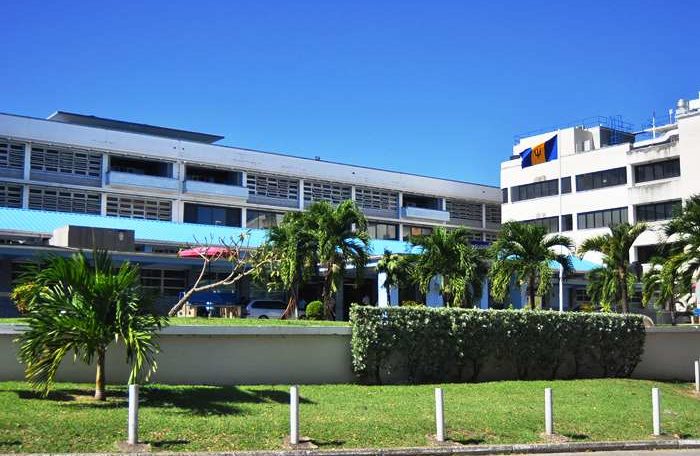The government has secured US$195 million (BDS$390 million) to expand the Queen Elizabeth Hospital, with groundbreaking expected before year-end and the project set to boost capacity by about 40 per cent, Minister of Health Senator Jerome Walcott announced on Monday.
The project is being financed through a deferred payment agreement with a Chinese consortium, under a loan at an interest rate of 3.5 per cent over 11 years, he said as the loan agreement was signed in a ceremony at Government Headquarters.
Sen. Walcott described the project as “a very important day for the Ministry of Health, and more in particular for the Queen Elizabeth Hospital, an institution that is over 60 years old”.
“It is roughly estimated to comprise 50 000 square metres of the present hospital, and this expansion will provide another, I believe, 19 320 square metres,” said the health minister. “So this is an increase in the size of the hospital by roughly 40 per cent.”
The expansion will include two new towers, connected to the existing hospital by a bridge over Martindale’s Road. One tower will house the laboratory, four new wards providing 96 additional beds, a burn unit, and expanded outpatient facilities, while the second will accommodate a cancer treatment centre and administrative offices.
There are 550 beds at the QEH but only 420 are being used.
The new technologies include a linear accelerator, which uses high-energy X-rays or electrons to deliver external beam radiation therapy to cancer patients, and brachytherapy, a form of radiation therapy in which the radiation source is implanted next to the tumour. The unit will also include a Positron Emission Tomography (PET) scanner, an imaging test that uses a radioactive substance to show how organs and tissues are functioning at a cellular level and a cyclotron, a type of particle accelerator that creates high-energy beams for radiation therapy.
Noting that Barbados has faced recurrent problems with laboratory capacity and environmental conditions, which became more evident during the COVID-19 pandemic, Senator Walcott said the new laboratory will be “state-of-the-art” and designed to handle “new and re-emerging diseases” and the “battles of antimicrobial resistance”.
Construction is estimated to take 42 months – about three and a half years – once ground is broken. “We were hoping, and we’re still hoping, that we could have groundbreaking before the end of this year,” Senator Walcott added.





